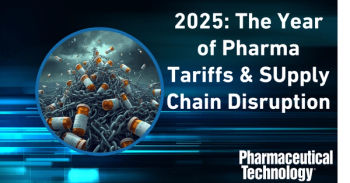
Pharmaceutical Technology Europe
- Pharmaceutical Technology Europe-09-01-2007
- Volume 19
- Issue 9
GDP comes to the fore
The recently published Orange Guide 2007 contains significant changes to the GMP requirement placed on pharmaceutical manufacturers, but there have been additional changes to good distribution practice that should not be overlooked.
It may be tempting to imagine that a manufacturer's responsibility for a pharmaceutical product lies only within the 'four walls' of a manufacturing facility, but, of course, this has never been the case. Whether through legislation and guidelines or simple common sense, it is clear that at any point of the supply chain the integrity of all pharmaceutical products must be ensured and not compromised. In short, a manufacturer's responsibility extends to sourcing materials from approved suppliers, continues through manufacturing under GMP, and on to delivering the product to the final customer or patient.
Hence, good distribution practice (GDP) remains an essential aspect of compliance for all pharmaceutical products as raw materials and products are transported and delivered on a global and local basis.
Moreover, as global supply chains are becoming more complex, and in the context of increasing commercial pressures, climate change and the global growth of counterfeiting, it is arguable that GDP has greater importance now than at any time since the first Orange Guide was published in 1971.
GDP
GDP is defined as "that part of quality assurance which ensures that products are consistently stored, transported and handled under suitable condition as required by the marketing authorization or product specification". This definition could reasonably extend to include sourcing, receipt, storage and transportation — looking at the full supply chain that is necessary to make and sell pharmaceutical products. The critical need to establish controls at all points of the supply chain is an increasing challenge for all pharmaceutical companies and their partners in handling and transporting medicines globally.
The importance of GDP is elaborated on in the EU Guidance on Distribution Practice, which sets out a Principle as the basis for operating to GDP. The following summary of that principle does reliably reflect its observations: "The Community pharmaceutical industry operates at a high level of quality assurance ... and this level of quality should be maintained throughout the distribution network so that authorized medicinal products are distributed to retail pharmacists and other persons entitled to sell medicinal products to the general public without any alteration of their properties.
"To maintain the quality of the products ... Directive 92/25/EEC provides that wholesalers must comply with the principles and guidelines of GDP published by the Commission of the European Communities..."
Areas for concern
Recent information available from MHRA suggests there are many areas where the pharmaceutical sector is falling down regarding GDP. These include deficiencies such as general storage and transportation problems, documentation/procedural deficiencies, such as the lack of written or insufficient standard operating procedures (SOPs), and inadequate systems for dealing with returns; and personnel issues concerning duties of key staff — even the Responsible Person. There is no reason to suppose that the incidents highlighted in this extensive list are in any way restricted to the UK, and statistics from previous years highlight many of the same failings.1 Worryingly, temperature control and monitoring is a recurring theme, and in the context of global warming the industry must address this issue. The Orange Guide makes specific reference to the requirement to ensure 'proper conservation and distribution' of medicines, and now contains recommendations on meeting these requirements.
Countering the counterfeiters
One of the biggest challenges for the pharmaceutical industry, and one of the main reasons why GDP is so important, is the increase of counterfeiting. The EC recently reported a fivefold increase in the seizure of counterfeit pharmaceutical items for 2006 compared with 2005.
The US-based Centre for Medicines in the Public Interest has predicted that counterfeit drug sales will reach $75 billion (€58 billion) globally in 2010. The WHO website suggests that counterfeits account for around 1% of sales in developed countries to in excess of 10% in developing countries, and medicines purchased via the internet from sites that conceal their physical address are counterfeit in more than 50% of cases.
GDP is a minimum requirement in helping to stem the flow of counterfeit products into legitimate distribution channels. The practice of parallel distribution, and the complex interfaces between manufacturers, distributors and repackagers — especially around withdrawal of product and subsequent disposal or reprocessing — are all areas of potential weakness that counterfeiters are only too willing to exploit. The need for all stakeholders in the pharmaceutical industry to work in partnership to ensure supply chain integrity and that only bona fide suppliers and customers are allowed to supply and sell is a must if we are to guarantee patient safety at all times.
Creating stronger links
Just as the manufacturer cannot disassociate itself from GDP, distributors cannot ignore their responsibilities under GMP. The preface of the new Orange Guide highlights the community requirements on distributors to adhere to the principles of GMP when repackaging and relabelling active substances used as starting materials.2 It also notes a new requirement on distributors that import from other member states to notify the marketing authorization holder and the competent authority (within the import country) of the intention to import.3 Moreover, the competent authority now has powers to conduct unannounced inspections of any firms (including distributors) employed by the marketing authorization holder where there are grounds for suspecting non-compliance with GMP principles.
While it is the EU Amending Articles rather than the Orange Guide that have introduced these changes, there is no doubt that the new Orange Guide should make it clearer in everyone's mind that these changes have come about. Both manufacturers and distributors need to fully understand their obligations under GMP and GDP, and to be aware where non-compliance could compromise a marketing authorization.
Getting it right
As the Orange Guide notes in its introduction: "The great majority of reported defective medicinal products has resulted from human error or carelessness, not from failures in technology".
From this, it is apparent that individuals within companies must do everything expected of them to meet the requirements of GMP and GDP, and by implication, they must first understand what those requirements are, and where their own activities come under the remit of GDP and/or GMP.
Conclusion
GDP is as essential to the continued success of the pharmaceutical industry as GMP, and this fact is recognized in the new Orange Guide, which contains several new entries pertaining to the quality of pharmaceutical products under GDP.
Although the new guidelines are intended to assist pharmaceutical manufacturers and distributors in achieving higher standards of compliance, training is a critical ingredient for success. Having the correct and well-trained staff will ensure GDP (and GMP) is managed successfully along the supply chains, and that pharmaceutical products are handled, transported and delivered with best-in-class GDP standards and full compliance.
Ciaran Brady is managing director of PLS Pharma Logistics (Ireland). Lyndsey Wright is manager of the training centre at RSSL Pharma Training (UK).
References
1. J. Taylor et al., The Pharmaceutical Journal, 270, 129, 25 January 2003.
2. Articles 1(33)–(35) of Directive 2004/27/EC amending Articles 46, 46a and 47 of Directive 2001/83/EC.
3. Article 1(55) of Directive 2004/27/EC amending Article 76 of Directive 2001/83/EC.
Articles in this issue
over 18 years ago
CPhI/ICSE/P-MEC 2007 show previewover 18 years ago
Cultivating Complianceover 18 years ago
Testing Inhalersover 18 years ago
Stacking the chips against counterfeitsover 18 years ago
Protein purification rulesover 18 years ago
Scale-up trials of foam-granulation technology — high shearNewsletter
Get the essential updates shaping the future of pharma manufacturing and compliance—subscribe today to Pharmaceutical Technology and never miss a breakthrough.




